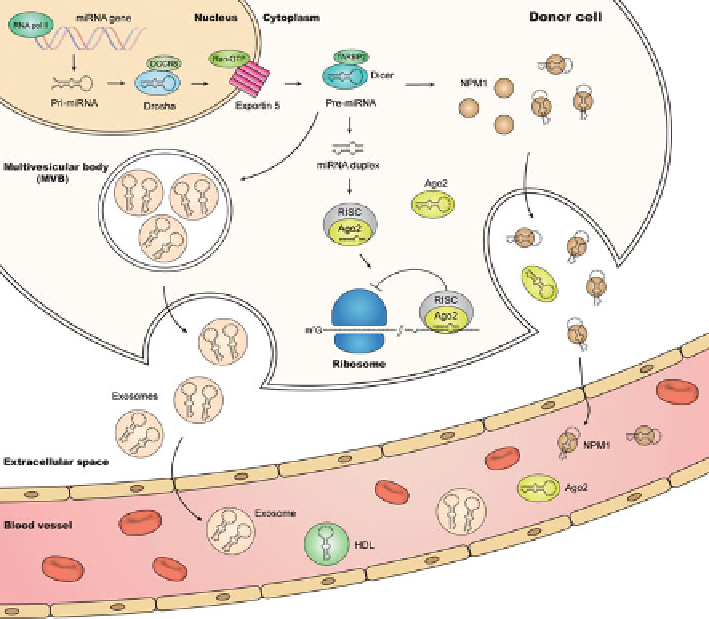Biology Reference
In-Depth Information
Fig. 13.4
Biogenesis and origin of circulating miRNAs
. Primary miRNA (pri-miRNA) transcripts
are generated in the nucleus and processed to precursor miRNAs (pre-miRNAs) by the Drosha
enzyme and DGCR8. After export to the cytoplasm, the pre-miRNA is recognized and processed
to a small double-stranded RNA (dsRNA) structure of about 22 nucleotides by Dicer, acting
together with TRBP. The dsRNA structure is recognized and unwound by the RISC complex,
including the AGO2 protein. Subsequently, the mature single-stranded miRNA is carried to com-
plementary miRNA target sites within mRNAs to regulate gene expression. Alternatively, pre-
miRNAs can be transported in body fluids as circulating miRNAs. Inward budding of endosomal
membranes can generate intracellular multivesicular bodies (MVBs) that release their content as
exosomes with encapsulated miRNAs. NPM1, AGO2, and high-density lipoprotein (HDL) have
been found to transport circulating pre-miRNAs. After entering the bloodstream, circulating miR-
NAs can be taken up and processed by recipient cells
(HDL) [
157-
160
] (Fig.
13.4
). So far, the vast majority of studies have focused on
the function of exosomes and how their constituents may impact tumor growth and
cancer disease. Exosomes are small vesicles (40-100 nm) that are formed by local
invaginations of endosomal membranes into multivesicular bodies (MVB) and

Search WWH ::

Custom Search